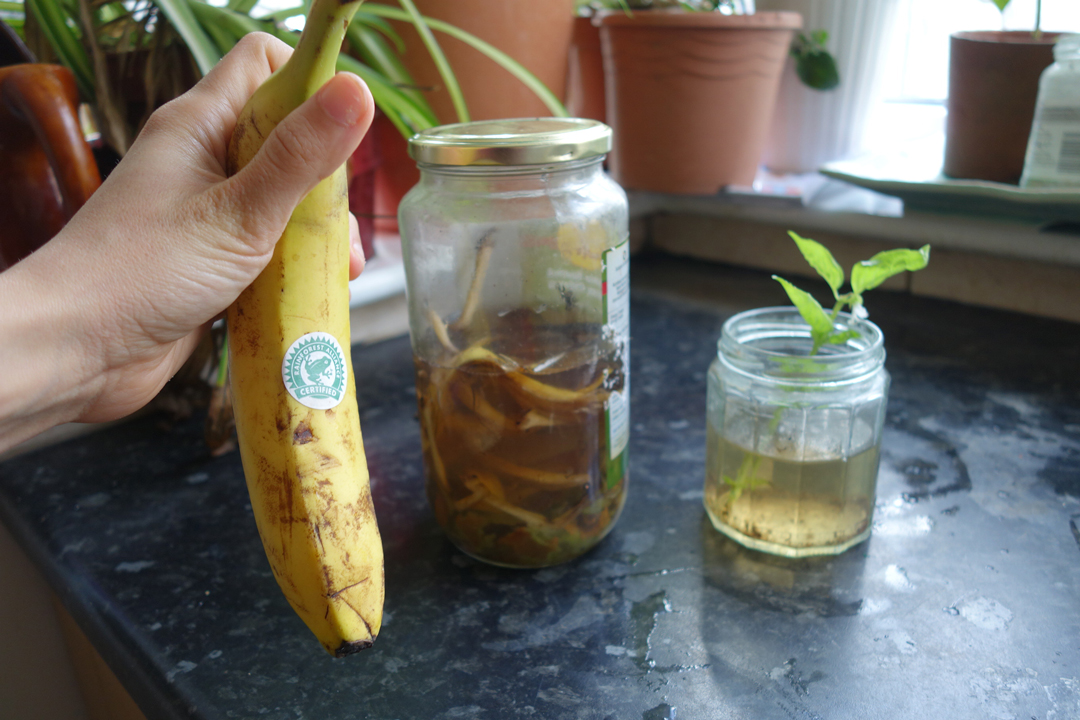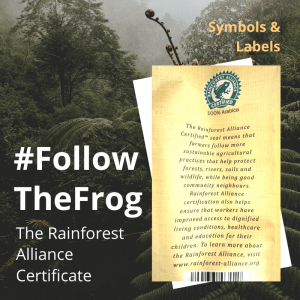
Definition of fertiliser
Making natural homemade fertiliser from leftovers is quite simple and great for your plants. Here are a few ideas:
- You can chop up banana peels and mix them in with soil or you can put them in a big jar with water and wait a couple of weeks. This will give you some liquid fertiliser. Bananas are rich in potassium.

Banana peel fertiliser
- You can put coffee ground leftovers on top of soil or you can mix it into the soil. Coffee ground is rich in nitrogen, magnesium and potassium. It is suitable for acid-loving plants such as tomatoes, blueberries, roses and azaleas.
- Crush up some eggshells after washing them and put the pieces in some soil. Eggshells and the water they were boiled in are rich in calcium. They are also good for keeping slugs at bay so a good idea is to leave some pieces on the surface of the soil around your plants.
- Save the dirty water from your fish tank, then use it to water your plants. It is rich in nitrogen and other nutrients.
- Save the water from steamed or boiled vegetables.

Water from boiled vegetables
Some more natural homemade fertiliser from leftovers
- You can start a compost bin by filling it with food and garden scraps, newspaper and a bit of water from time to time. Turn it upside down to speed up the composting process. When everything has broken down spread it on the soil around your garden
- Jon makes his own natural fertiliser from his wormery, which is a lot of fun when you get into it!

Natural fertiliser from Jon’s wormery
Remember the golden rule when using fertilisers: “less is more.” Don’t use too much fertiliser or make it too concentrated. The fertiliser from Jon’s wormery, for example, needs to be diluted with water: one part fertiliser to nine parts water.
The 7-day Lockdown Leftover Challenge
Today, the Lockdown Leftover Challenge starts on Instagram!
Join the challenge to stop food waste – one of the leading causes of climate change! Share recipes, tips and nominate your friends with the hashtag #lockdownleftovers.
The campaign is organised by the Climate Venture Collective, a new collaborative community that meets once a month in London to find a solution to problems related to the climate.





